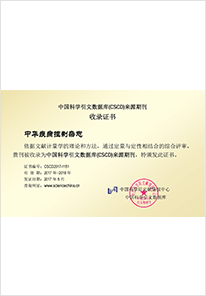2016 Vol. 20, No. 11
Display Method:
2016, 20(11): 1079-1082,1087.
doi: 10.16462/j.cnki.zhjbkz.2016.11.001
Abstract:
2016, 20(11): 1083-1087.
doi: 10.16462/j.cnki.zhjbkz.2016.11.002
Abstract:
2016, 20(11): 1088-1091.
doi: 10.16462/j.cnki.zhjbkz.2016.11.003
Abstract:
2016, 20(11): 1092-1094,1105.
doi: 10.16462/j.cnki.zhjbkz.2016.11.004
Abstract:
2016, 20(11): 1095-1100.
doi: 10.16462/j.cnki.zhjbkz.2016.11.005
Abstract:
2016, 20(11): 1101-1105.
doi: 10.16462/j.cnki.zhjbkz.2016.11.006
Abstract:
2016, 20(11): 1106-1109,1113.
doi: 10.16462/j.cnki.zhjbkz.2016.11.007
Abstract:
2016, 20(11): 1110-1113.
doi: 10.16462/j.cnki.zhjbkz.2016.11.008
Abstract:
2016, 20(11): 1114-1116.
doi: 10.16462/j.cnki.zhjbkz.2016.11.009
Abstract:
2016, 20(11): 1117-1119,1123.
doi: 10.16462/j.cnki.zhjbkz.2016.11.010
Abstract:
2016, 20(11): 1120-1123.
doi: 10.16462/j.cnki.zhjbkz.2016.11.011
Abstract:
2016, 20(11): 1124-1126.
doi: 10.16462/j.cnki.zhjbkz.2016.11.012
Abstract:
2016, 20(11): 1127-1130,1150.
doi: 10.16462/j.cnki.zhjbkz.2016.11.013
Abstract:
2016, 20(11): 1131-1134,1143.
doi: 10.16462/j.cnki.zhjbkz.2016.11.014
Abstract:
2016, 20(11): 1135-1138.
doi: 10.16462/j.cnki.zhjbkz.2016.11.015
Abstract:
2016, 20(11): 1139-1143.
doi: 10.16462/j.cnki.zhjbkz.2016.11.016
Abstract:
2016, 20(11): 1144-1146.
doi: 10.16462/j.cnki.zhjbkz.2016.11.017
Abstract:
2016, 20(11): 1147-1150.
doi: 10.16462/j.cnki.zhjbkz.2016.11.018
Abstract:
2016, 20(11): 1151-1153,1181.
doi: 10.16462/j.cnki.zhjbkz.2016.11.019
Abstract:
2016, 20(11): 1154-1156,1164.
doi: 10.16462/j.cnki.zhjbkz.2016.11.020
Abstract:
2016, 20(11): 1157-1160.
doi: 10.16462/j.cnki.zhjbkz.2016.11.021
Abstract:
2016, 20(11): 1161-1164.
doi: 10.16462/j.cnki.zhjbkz.2016.11.022
Abstract:
2016, 20(11): 1165-1171.
doi: 10.16462/j.cnki.zhjbkz.2016.11.023
Abstract:
2016, 20(11): 1172-1175.
doi: 10.16462/j.cnki.zhjbkz.2016.11.024
Abstract:
2016, 20(11): 1176-1181.
doi: 10.16462/j.cnki.zhjbkz.2016.11.025
Abstract:
2016, 20(11): 1182-1183,1186.
doi: 10.16462/j.cnki.zhjbkz.2016.11.026
Abstract:
2016, 20(11): 1184-1186.
doi: 10.16462/j.cnki.zhjbkz.2016.11.027
Abstract:


 Email alert
Email alert RSS
RSS Abstract
Abstract PDF
PDF





